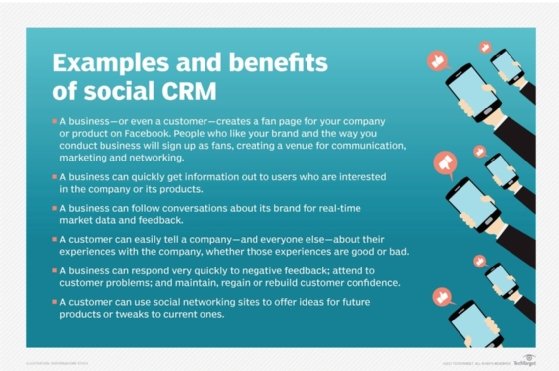Why is social media important for e-commerce? (original) (raw)
Article 1 of 4
Part of: Guide to e-commerce content strategies
To increase transparency, organizations can integrate social media with their e-commerce platform and enable users to post reviews and rate their products.
Nearly half of the world's population uses social media regularly, and that amount continues to increase.
Social media can help both organizations and customers create and distribute content about products sold online in the form of reviews, ratings and photos. These types of content can significantly influence potential customers, so any organization with an internet storefront should understand the role of social media in e-commerce.
Additionally, due to the COVID-19 pandemic, online retailers like Amazon saw a surge in online shopping, as many consumers wanted to avoid face-to-face contact and several retailers closed their physical shops temporarily. These factors further increased the ways social media can drive brand awareness and e-commerce success.
The role of social media in e-commerce
Social media plays a strategic role in driving online sales. For example, if brands or products go viral online, they can see a spike in sales, increased brand awareness and more direct interactions with consumers through promotions and targeted ads. Without that exposure, organizations can find themselves isolated from customers and unable to reach out and promote their products.
Additionally, social media has expanded beyond platforms like Facebook or Twitter. Newer, popular platforms like TikTok, Snapchat and several others with billons of subscriptions can get the word out and expose target clients to the organization's offerings.
4 benefits of social media in e-commerce strategies
If an organization incorporates social media into its e-commerce strategy, it can increase consumers' brand awareness, connect more with customers, meet their needs and better understand the market.
1. Boost brand awareness
To help drive customer loyalty and remind consumers of the organization, frequent online ads and product promotion from influencers can increase demand and encourage repeat purchases.
2. Interact more with customers
Most customers may call the organization to complain or give feedback, but social media can also deliver direct consumer feedback. Customer experience teams can monitor social media sentiment -- including complaints -- around the brand or products to gain insights into the customer journey.

Organizations can use social CRM software to help organize customer feedback from different platforms.
3. Address customer needs
As most organizations use social media to promote their products, they can also see competitors' products and consumer sentiment around them. While no marketing team should base its strategy on what others do, social media can provide insights into what the competition does, which can spark creativity and show a company different ways to approach its target audience.
4. Understand market appetite
Social media can help organizations gauge consumers' levels of interest in their products and offerings. If social media teams post new products and get feedback on them, they can gain insights into how the market might react. These insights can come from micro campaigns and real-time feedback on different platforms. Social media can also show organizations how customers use products and see customers' photos or videos of their products.
Organizations without access to reviews or social media from the e-commerce platform may be at a disadvantage.
How to analyze consumer sentiment
Online shoppers want transparency about the products they buy, so organizations without access to reviews or social media from the e-commerce platform may be at a disadvantage. Customers have two ways to identify how others perceive a product they want to purchase.
1. Product reviews
Customers can find product reviews on websites such as Facebook, TikTok, Twitter, YouTube, Pinterest, Instagram and Google Reviews. With the millions of users across social media, these platforms likely contain feedback on any product.
Organizations can link their e-commerce sites to social media platforms to drive more traffic, increase follower counts, enable customers to post reviews and respond to those reviews accordingly. Businesses can also use social media monitoring software to gather all customer feedback into one dashboard, making it easier to view and answer.
However, organizations have little control over what customers post online. A negative review can linger, and the company may not be able to remove it.
2. Rating and review systems
When integrated with e-commerce platforms, these tools give organizations more control over what customers post and how to address issues in real time.
Most of these products also offer real-time chat capabilities where customers can ask questions about the products. Social tools, such as Kiyoh, Feefo, eKomi, Bazaarvoice and TrustSpot, can enable site visitors to post product reviews and ratings within the site's catalog.
Next Steps
How do you know when you've outgrown your e-commerce platform?
The history and evolution of social media explained
The new social media landscape in 2023 and how to navigate it
Dig Deeper on Content collaboration
-
 What are customer service and support?
What are customer service and support?  By: Katie Terrell Hanna
By: Katie Terrell Hanna -
 What is conversational commerce?
What is conversational commerce?  By: Griffin LaFleur
By: Griffin LaFleur -
 What is social media marketing (SMM)?
What is social media marketing (SMM)?  By: Katie Terrell Hanna
By: Katie Terrell Hanna -
 What is social media?
What is social media?  By: Katie Terrell Hanna
By: Katie Terrell Hanna
Related Q&A from Reda Chouffani
Can Microsoft Teams send text messages?
There are many times when it would be helpful to send text messages via Teams. Fortunately, there are ways to do this through Microsoft and ...Continue Reading
Are electronic signatures legally binding?
Remote and hybrid work have fast-tracked many digital initiatives, including electronically signing legal documents. But e-signatures' legal ...Continue Reading
How to enable a Teams-contact center integration
Explore the three ways Microsoft supports integrating a contact center with Teams to enable more advanced calling and collaboration features for ...Continue Reading
Part of: Guide to e-commerce content strategies
Article 1 of 4